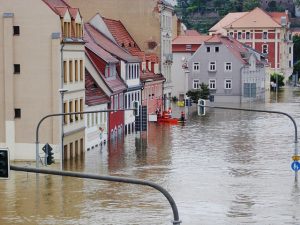 The UK government created a new campaign in May 2024 advising people in the UK to be prepared for emergencies including setting up a 3 day supply of non-perishable food that does not need cooking and a minimum of 3 litres of drinking water per person per day, preferably 10 litres per person per day to include cooking and hygiene.
The UK government created a new campaign in May 2024 advising people in the UK to be prepared for emergencies including setting up a 3 day supply of non-perishable food that does not need cooking and a minimum of 3 litres of drinking water per person per day, preferably 10 litres per person per day to include cooking and hygiene.
So if you want to have this 3 day food supply, what should you include? Unless you have a cooking supply that can’t be turned off (such as bottled gas, your own electricity generator with fuel, or a camping stove with fuel) then your food needs to be something you can eat without cooking. It also needs to be something that can be stored easily without refrigeration or freezing.
Food Selection Criteria
Non-Perishable – Choose items with a long shelf life
Your food needs to be nutritionally balanced and easy to prepare. Ensure you choose a mix of protein, carbohydrates, and fats with foods that require little to no cooking. Also include comfort food, with some items that are familiar and comforting.
Basic List for a 3-Day Supply
Proteins
These could include canned meat or fish (such as chicken, tuna, salmon, ham), beans and legumes (canned or dried), peanut butter or other nut butters, protein bars or shakes.
Carbohydrates
Canned soups and stews, instant oatmeal or cereal, crackers or rice cakes, pasta and instant rice (these will need boiling water), canned vegetables and fruits (ensure no added sugars for fruits).
Fats
Nuts and seeds, trail mix, olive oil or coconut oil (small bottles or tubs – coconut oil is mostly solid at normal temperatures in the UK)
Other Essentials
Powdered milk or shelf-stable milk, dried fruits, granola or energy bars, Bread or tortillas, sugar, salt, and pepper, tea, coffee, or hot cocoa mix.
Water Supply
1 gallon of water per person per day: This covers both drinking and basic hygiene. You will need 3 litres for drinking, the rest for cooking and hygiene.
Additional Items
Manual can opener: Essential for opening canned goods.
Disposable utensils and plates: Useful if you can’t wash dishes.
Portable stove or grill: If you have access to fuel and can cook safely outdoors.
Plastic bags for disposal of plastic or paper plates. These are also very useful if you have no access to a flushing toilet.
Sample Menu
Day 1:
Breakfast: Instant oatmeal with dried fruit
Lunch: Canned chicken salad with crackers
Dinner: Canned soup with bread
Snacks: Nuts and dried fruit
Day 2:
Breakfast: Cereal with powdered milk
Lunch: Peanut butter on tortillas
Dinner: Instant rice with canned beans and vegetables
Snacks: Granola bars
Day 3:
Breakfast: Protein bar and a piece of fruit
Lunch: Tuna salad with crackers
Dinner: Pasta with canned tomato sauce and vegetables
Snacks: Trail mix
Storage Tips
Store your food in a cool, dry place.
Check expiration dates regularly and rotate your stock to use items before they expire.
Keep all supplies in an easily accessible location.
Final Tips
- Customize your kit based on dietary needs and preferences.
- Include comfort foods to help maintain morale.
- Review and update your supply every six months to ensure everything is fresh and up to date.
- By following this guide, you can create a well-rounded and reliable 3-day emergency food supply to keep you and your family safe and nourished during unexpected power cuts or other emergencies.